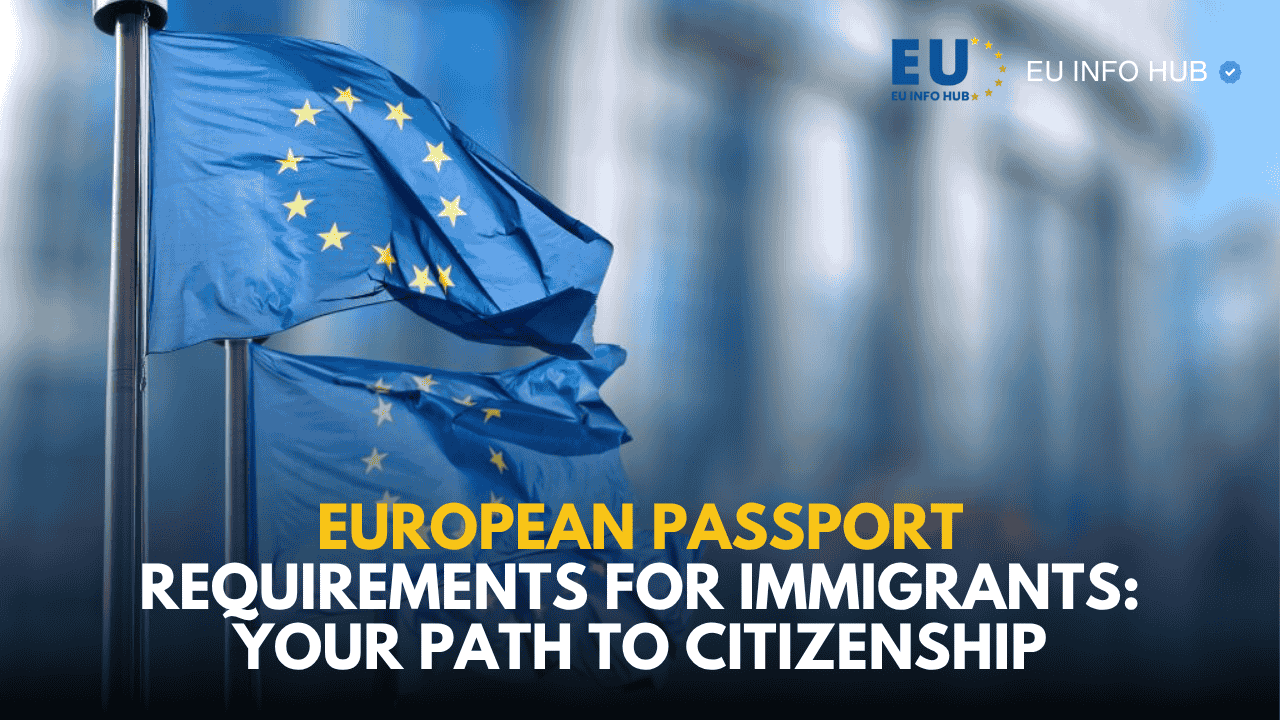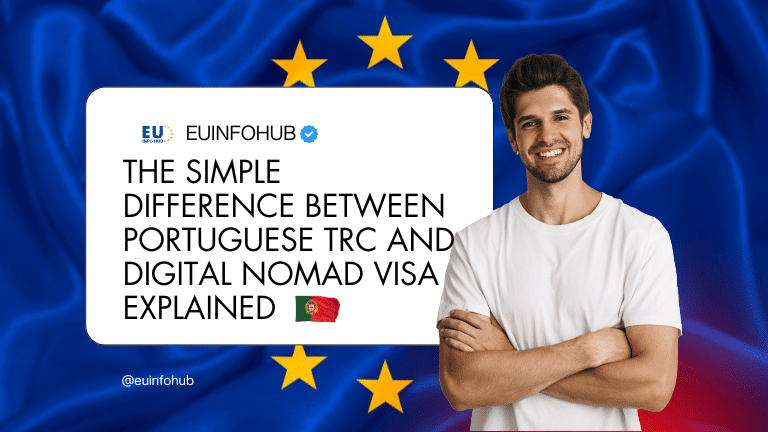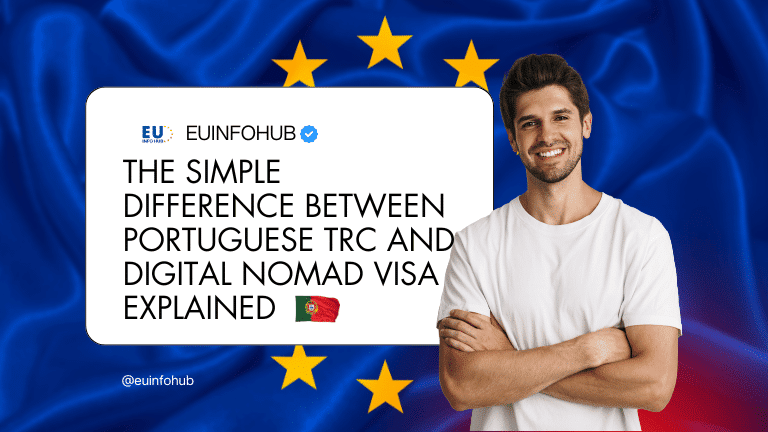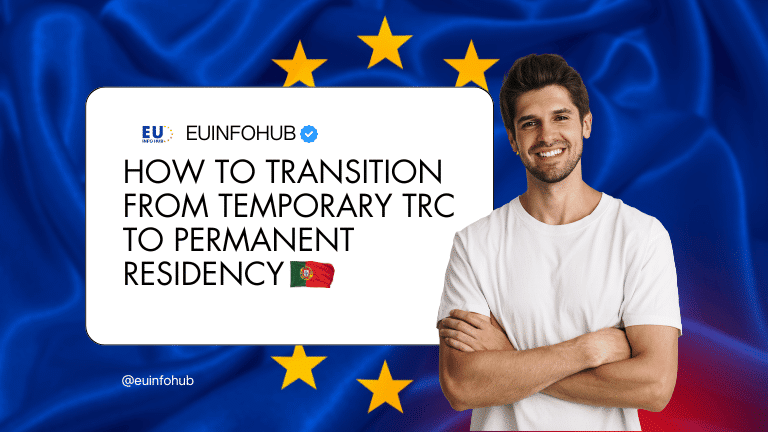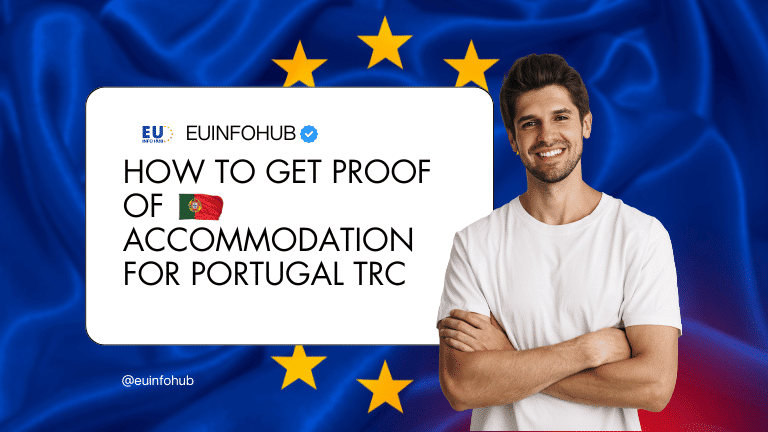Have you ever imagined in your daydreams holding a European passport in your hand? You’re certainly not alone. Every year, thousands of immigrants travel to get EU citizenship. With a European passport, you can live and work in an additional 27 countries and have better education, healthcare, and job opportunities.
But what are the European passport requirements for immigrants?
In this blog, we will break down the steps to obtain citizenship in Europe. From residence visa options to Schengen visa extensions, and even what the quickest Schengen visa route might look like, we’ve got it all covered. Let’s take a look.
Why a European Passport Is Worth It
A European passport grants all the advantages of EU citizenship. This allows for free living, working, studying, and traveling across all 27 EU member nations. Additionally, it will enable visa-free access to over 180 countries, along with access to public healthcare, social benefits, and the right to vote in EU elections. Your children can also benefit from these rights.
You can have the best job opportunities, education options, and legal protections. Once you obtain it, you will no longer need to apply for a residence visa or a Schengen visa again.
For those who wish to reside in Europe for an extended period, European nationality is a crucial key to global freedom and financial independence.
Step 1: Enter Europe with the Right Visa
You cannot even think about citizenship unless you first enter Europe legally. Many people begin their travels with a Schengen visa for short visits, whether for tourism, family reunions, or conferences.
What is a Schengen Visa?
This type of visa allows travel within 26 European countries for 90 days or 180 days, depending on the maximum duration. However, it does not provide opportunities to work or settle there for an extended period. It is fairly suitable for just exploring your options.
Step 2: Getting a Residence Visa
A residence visa is what turns your European dream into a long-term reality. It gives you the legal right to live in a specific country for more than 90 days. Most residence visas are valid for 1–2 years and can be renewed.
Common Types of Residence Visas
There are different visas based on your purpose for staying:
Student Visa: For those enrolling in a full-time university program. You’ll need admission proof and funds to support yourself.
Work Visa: If you have a job offer from a European company, this visa lets you live and work legally in that country.
Family Reunification Visa: Reunite with a spouse, parent, or child already residing in the EU. You’ll need documents proving your relationship.
Entrepreneur Visa: This visa is suitable for individuals who own or manage a business or invest in real estate projects. Most countries also require health insurance, proof of income, and a clean criminal record to approve your residence visa.
Each country has its own set of rules, but most applications require health insurance, proof of income, and a clean criminal record.
Step 3: Green Card Europe Style
Once you have legally settled in Europe for several years, you may be eligible for permanent residence. This stage is often referred to as the equivalent of a green card Europe, since most of the benefits of citizenship are included here, except for the passport.
Most of the time, you will need to reside in your host country for five consecutive years. You must prove that you have settled into society, are stable financially, and speak the local language (at least a basic level).
Permanent residency eliminates the need for repetitive renewals in a year, as once it is granted, there is no further requirement for renewal. You also have more freedom to move around for work and buy property.
Step 4: The Path to Citizenship and the European Passport
This is the final step of acquiring citizenship. To apply for citizenship, you must have resided in the respective country as a permanent resident for a specified period. This is one of the main European passport requirements for immigrants.
Here are a few basic European passport requirements for immigrants to be fulfilled;
- 5 to 10 years of total legal stay
- Proof of integration into society
- Basic fluency in the national language
- Clean criminal background
A few countries, like France and Spain, reject dual nationalities, while a few countries allow it, such as Ireland. When these are approved, a European passport is issued, and you get all the perks of an EU citizen.
When these conditions are fulfilled, the European passport is issued. It offers full EU citizenship, which enables you to stay, work, participate in political activities, and travel freely anywhere you wish. It’s more than a paper; it’s a way to secure a brighter and more pleasant future.
Can I Extend a Schengen Visa?
Suppose you are already in Schengen land on a Schengen visa and want to stay longer. Is it possible to extend the Schengen visa?
The answer is Yes, but under certain conditions, like:
- Medical emergencies
- Delays due to natural disasters or flight issues
- Humanitarian reasons
Most countries do not extend for travel purposes. Therefore, if you wish to do so, you must have a residence visa in hand before the short-stay visa expires.
What’s the Quickest Schengen Visa Timeline?
Many travelers ask about the quickest Schengen visa process, especially when plans change at the last minute. The speed of approval depends on several factors:
- Your home country and visa history
- The specific embassy or consulate you apply to
- The timing of the application during busy seasons can prolong the processing
- Double-checking of paperwork if its complete and fulfills European passport requirements
Therefore, ensure that you finalize everything beforehand to avoid delays and rejections in any visa process. Here’s a clear view of the expected time frame of each stage:
| Stage | Average Duration |
| Schengen Visa | 7–15 days |
| Residence Visa | 1–3 months |
| Permanent Residency | After 5 years |
| Citizenship & Passport | 5–10 years total stay |
Some countries offer fast-track options through investment or exceptional talent. But, for most people, this takes a few years and a bit of patience.
Wrap Up
Here our discussion for European passport requirements for immigrants come to an end. The journey to a European passport may take time, but with the right support, it becomes clear, achievable, and exciting. Whether you consider options for a residence visa, would like to study, or are working toward citizenship, each little step counts.
From start to finish, the EU Info Hub will ensure your convenience, less time spent, and peace of mind. Get in touch today, and let us make your European dream come true.
FAQs
Q1: Can I apply for permanent residency after a student visa?
Yes, but you’ll need to change to a work or family visa after graduation. The time spent as a student sometimes counts in favour of permanent residence, depending on the country.
Q2: Does every country provide a green card type for Europe?
Not by that name, but yes. Most EU countries offer long-term or permanent residence permits that serve the same purpose.
Q3: Is a Schengen visa enough to apply for a job in Europe?
No. A Schengen visa is for short stays only. You will need a proper residence visa with work authorization to be eligible to work.
Q4: Can I hold two passports if I become a European citizen?
Certain states allow duplicate citizenship, while others may not allow it at all, so check the laws of your home country and the EU country you are applying in.

